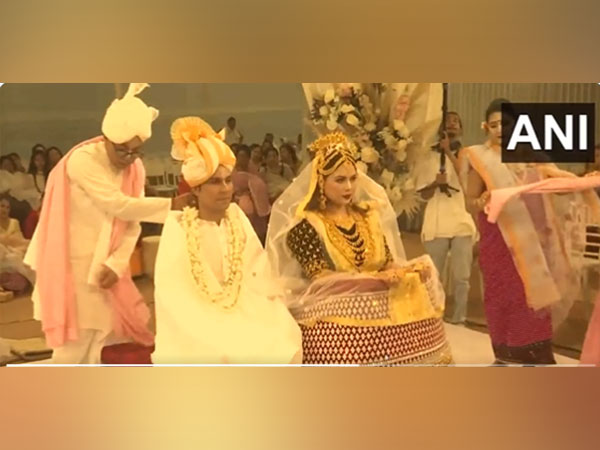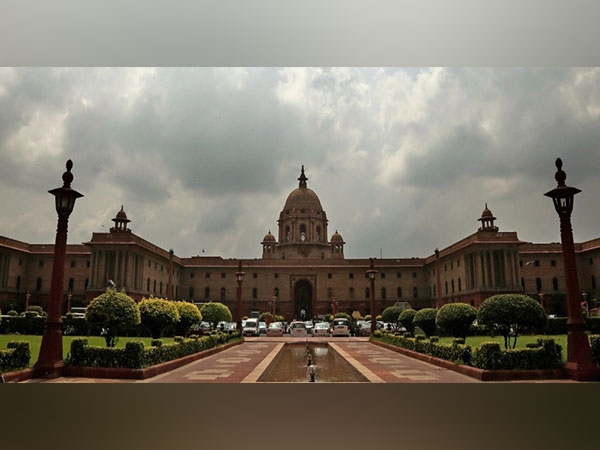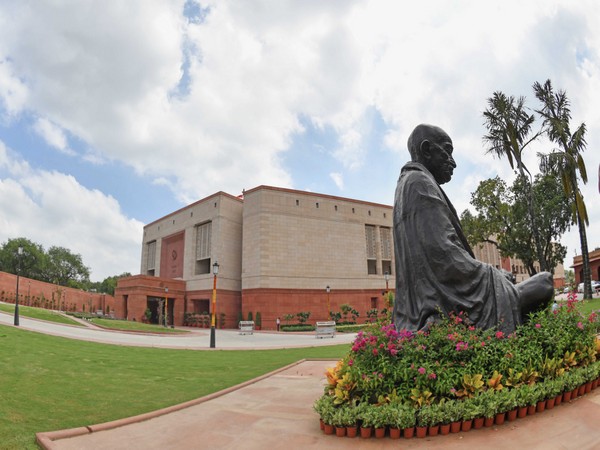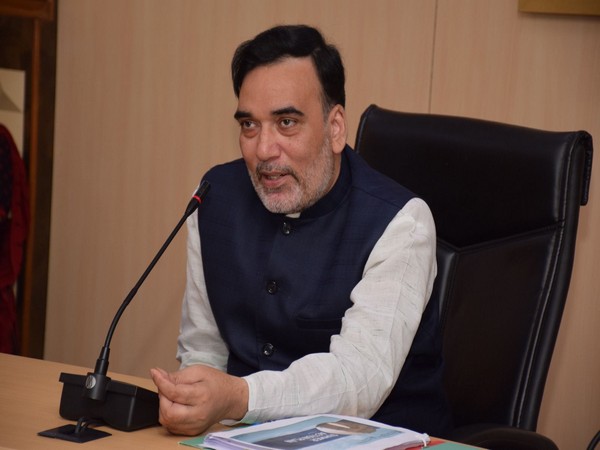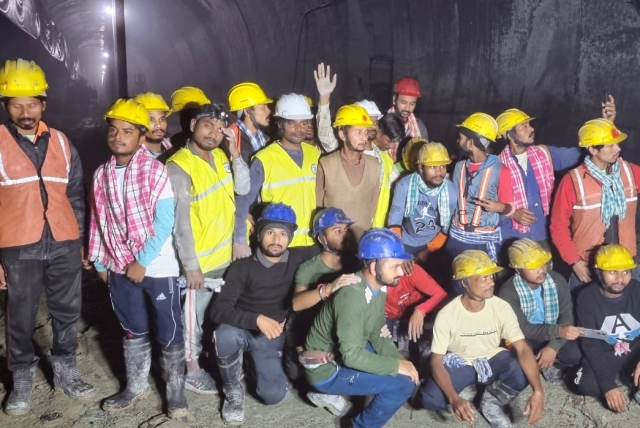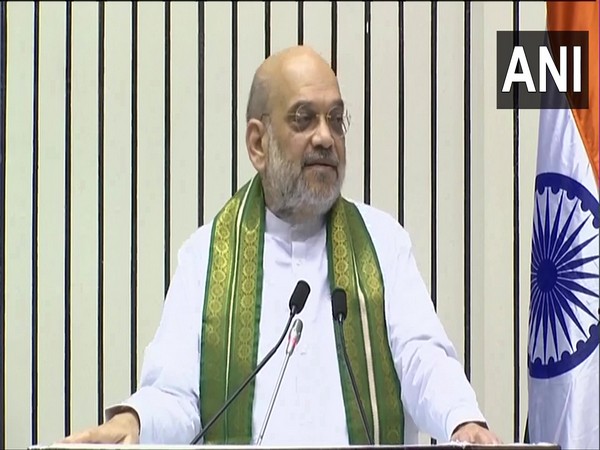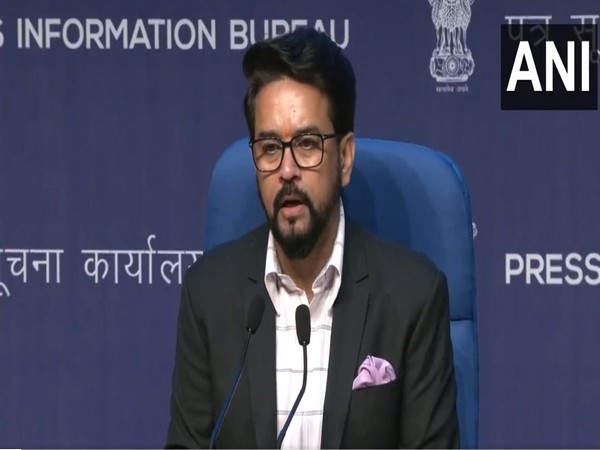Actors Randeep Hooda and Lin Laishram have tied the knot in a traditional Meitei wedding ceremony in Imphal on Wednesday.
Randeep dressed in white, looked like a beautiful Manipuri groom as he was surrounded by his family and relatives. While another video from the wedding ceremony has Lin dressed as a traditional Manipuri bride.
Randeep was spotted wearing a white shawl. Lin was dressed in a Potloi or Polloi, a cylindrical skirt made up of thick cloth and bamboo. It is ornamented with satin and velvet material, as well as gems and glitter.
Wedding rituals took place at Chumthang Shannapung resort in Imphal as actors Randeep Hooda and Lin Laishram tied the knot in a traditional Meitei wedding ceremony here.
Randeep Hooda and Lin Laishram, along with their families, visited Relief Camp at Moirang Lamkhai and Sendra Tourist Resort earlier.
During an interaction with a media person, Randeep talked about his love story with Lin Laishram and how he is excited to experience the Manipuri tradition.
He said, “Feels very good. I felt that it’s only respectful to come and marry in the bride’s tradition. However I have heard that in Meitei love marriages, the groom has to sit for a very long time. So, that’s something but I am looking forward to the ceremony and traditions. I want to experience my life partner’s culture. That’s why I am here.”
Randeep added, “I hope I don’t make any mistakes. And we have been talking about their culture, Manipuri culture and all that for a long time. I am looking forward to it and hope that all goes well. I am praying for our happy future and lots of kids and lots of abundance. Yes, it’s east meets west. It’s like a traditional or cultural exchange. We have been friends for a very long time. We met when we were in the theatres. Since then, we have had a great friendship, which we are now making into a family.”
Lin Laishram also shared a story about how it all started with Randeep Hooda.
She stated, “We actually met at Naseeruddin Shah’s theatre group called Motley and he was my senior. That’s where I met him. We were friends and it’s turning into a beautiful journey.”
A few days ago, Randeep took to Instagram and announced that they would marry in Imphal on November 29. He wrote in the caption, “We Have Exciting News.”
The post included a card picture with a message written on it. The message read, “Taking a leaf out of the Mahabharata where Arjuna married Manipuri Warrior Princess Chitrangada, we are getting married with the blessings from our families and friends.”
“We are filled with immense joy to share that our marriage will take place on November 29, 2023, in Imphal, Manipur, followed by a reception in Mumbai. As we embark on this journey, we seek your blessings and love for this union of cultures, for which we are forever indebted and grateful. In love and light, Lin and Randeep.”
Even though, earlier, Randeep and Lin never confirmed their relationship in public, the two often post pictures of each other on social media.
This Diwali also, they shared a string of cheerful photos with the caption, “From ours to yours, Happy Diwali.”
In August 2023, Lim added fuel to her dating rumours with Randeep by posting an adorable birthday wish for the ‘Sarabjit’ star.
Lin took to Instagram to wish Randeep with a caption, “Happy birthday my hot fudge.”
In October 2022, Randeep seemingly made his relationship Instagram official with Lin. On Diwali, Randeep took to Instagram and shared photos with Lin and his parents.
Sharing the photos, Randeep wrote, “Love and light to all around the world#happydiwali #diwali2022”
Notably, Lin made her Bollywood debut in 2007 with the film ‘Om Shanti Om’ in which she gave a cameo appearance as Om Kapoor’s friend. She has appeared in other Bollywood films including Mary Kom (2014) as Bem, Umrika (2015) as Udai’s wife, Rangoon (2017) as Mema, Qaidi Band (2017), and Axone (2019) as Chanbi.
Randeep, on the other hand, made his debut with ‘Monsoon Wedding’, got a lot of popularity with films such as ‘Once Upon a Time in Mumbaai’, ‘Saheb, Biwi Aur Gangster’, ‘Rang Rasiya’, ‘Jism 2’ and many more.
He will be seen in the film ‘Swatantra Veer Savarkar’. The project is a biopic of freedom fighter Vinayak Damodar Savarkar, popularly known as Veer Savarkar.
Directed and co-written by Randeep Hooda with Utkarsh Naithani, the film is produced by Anand Pandit Motion Pictures and Randeep Hooda Films with Legend Studios and Avak Films.
‘Pavitra Rishta’ fame Ankita Lokhande will be seen opposite Randeep in the film.
Vinayak Damodar Savarkar was born on 28 May 1883 in Maharashtra’s Nashik. He was a freedom fighter, politician, lawyer, and writer. Savarkar is known for coining the term ‘Hindutva’.
Randeep was recently seen in ‘Sergeant’, a suspense cop-drama. (ANI)
For more details visit us: https://lokmarg.com/
